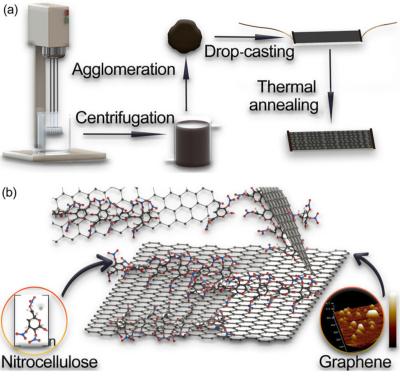Researchers from The University of Manchester and Hubei University have integrated the electrical conductivity of graphene and the insulation of nitrocellulose to prepare a fire alarm sensor.

The graphene/nitrocellulose membrane remains electrically insulated in normal condition, but instantly turns conductive at high temperatures: Upon encountering flames, nitrocellulose decomposes rapidly as a reaction to the high temperature and induces a distinct transition in its electrical resistance, causing the transformation process of the alarm sensor from being electrically insulated to an electron conductive state.
Furthermore, the response temperature and sensitivity of these sensors can be tuned by adjusting the ratio of graphene and nitrocellulose to react in different fire-prone scenarios: each 1% increase in nitrocellulose content leads to a â¼1.8 °C increase in the response temperature.
Because the nitrocellulose thermal decomposition reacts in instances and requires only heat where oxygen is an indispensable factor the alarm sensor is able to work stably in an oxygen-free or vacuum environment.
The researchers conclude that this fire alarm also broadens the applications of chemical-modified cellulose and graphene composites in temperature-induced resistance transition sensors with smart responsive behaviors, which provides a promising concept for its applications concerning public safety in terms of fire risk at high fire risk examinations.